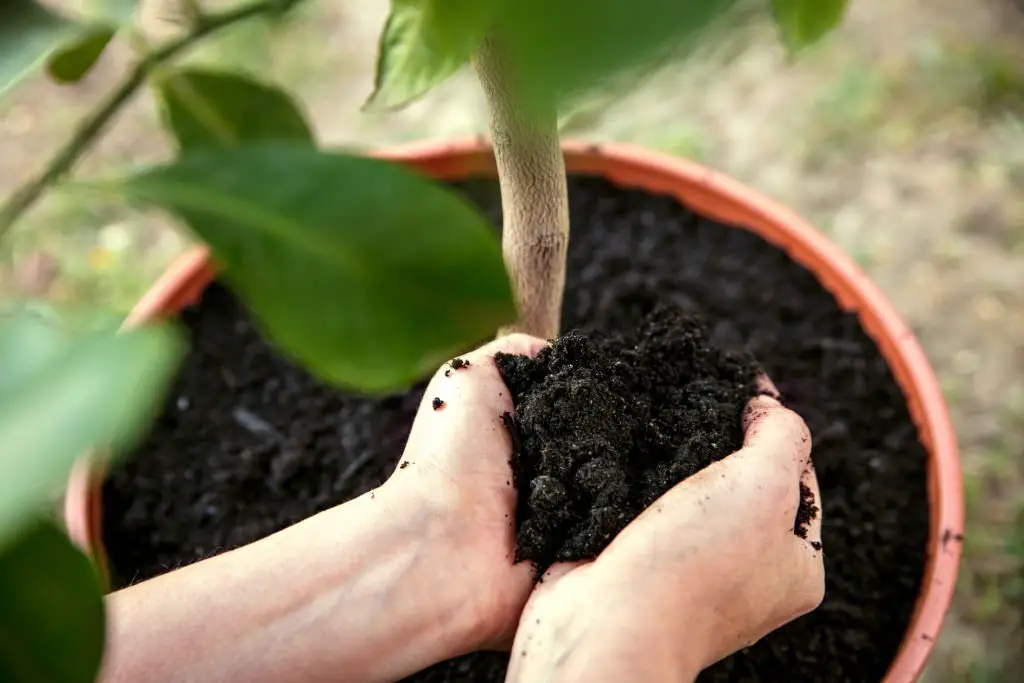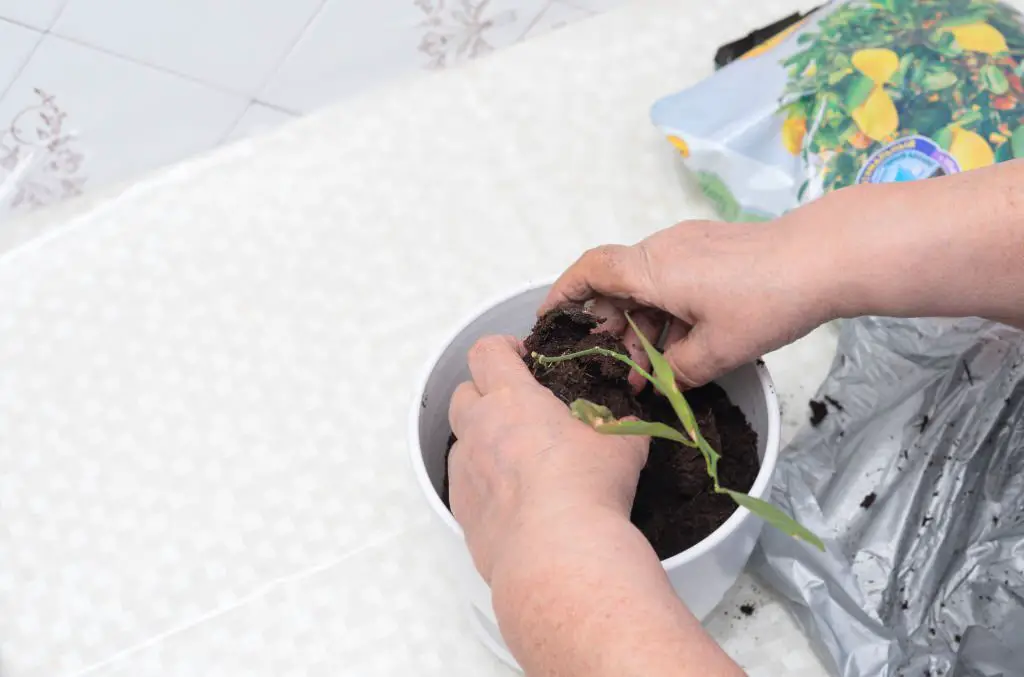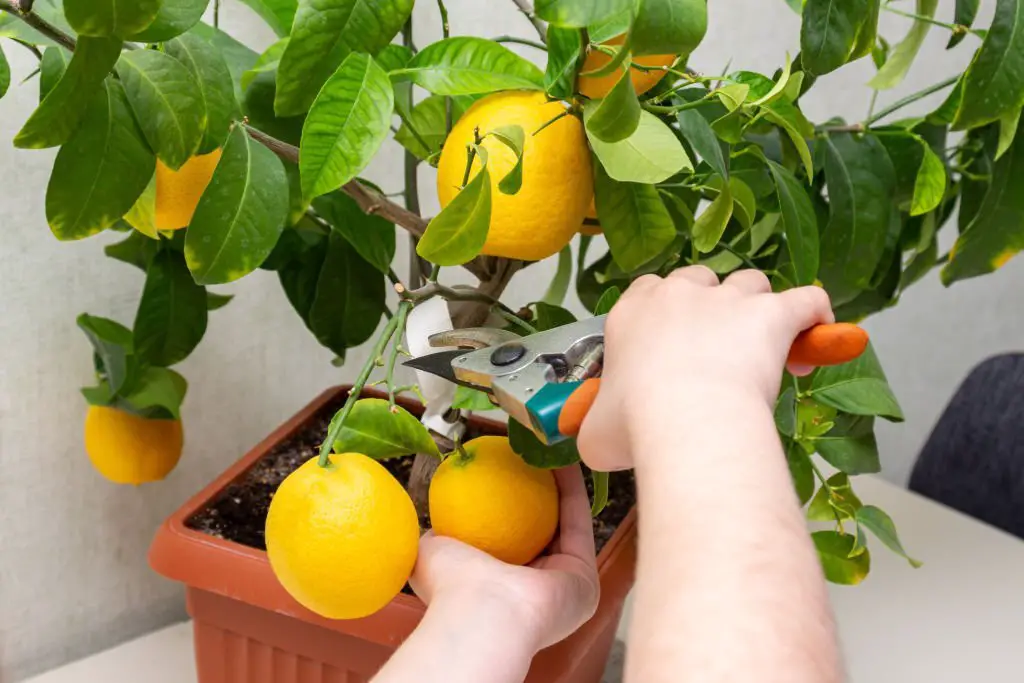Did you know that growing a lemon tree indoors can provide you with fresh, vibrant lemons all year round? With the right care and attention, you can enjoy the beauty and benefits of an indoor lemon tree.
In this article, we will guide you through the process of selecting the perfect lemon tree, planting it in the ideal pot, and providing the necessary care for optimal growth.
Get ready to enjoy the fruits of your labor!
Can You Grow a Lemon Tree Indoors
Can you successfully grow a lemon tree indoors? The answer is yes, you can! Growing a lemon tree indoors is a great way to enjoy fresh lemons all year round, even if you don’t have a large outdoor space. Indoor lemon trees can thrive in pots and containers, as long as they receive proper care and attention.
When choosing a lemon tree variety, look for dwarf or compact varieties that are well-suited for indoor cultivation. Provide your lemon tree with plenty of sunlight, at least 8-12 hours a day, either by placing it near a sunny window or using grow lights.
Make sure to water your lemon tree regularly, keeping the soil moist but not overly saturated. Additionally, it’s important to fertilize your lemon tree every few months to ensure healthy growth.
Choosing the Best Lemon Tree for Indoors
When selecting the ideal lemon tree for your indoor space, consider compact or dwarf varieties well-suited for indoor cultivation. These varieties are specifically bred to thrive in pots and have a smaller size, making them perfect for limited spaces.
Some popular compact lemon tree varieties include the Meyer lemon, Ponderosa lemon, and the Lisbon lemon. The Meyer lemon is known for its sweet and tangy flavor, while the Ponderosa lemon produces large fruits. The Lisbon lemon, on the other hand, is a classic lemon variety with a tart flavor.
When choosing your lemon tree, look for healthy plants with strong branches and vibrant green leaves. Additionally, consider the lighting conditions in your home and choose a lemon tree that can tolerate lower light levels if necessary.
Selecting the Perfect Indoor Lemon Tree Pot
To ensure the health and growth of your indoor lemon tree, you’ll need to choose the perfect pot and location for it.
When selecting a pot for your lemon tree, opt for a container that’s at least 12 to 16 inches in diameter with drainage holes at the bottom. This will allow excess water to escape and prevent root rot. Consider using a lightweight plastic or resin pot, as they’re easier to move and less prone to breaking. Additionally, choose a pot with a saucer to catch any water that drains out. This will help maintain humidity levels around the tree.
Remember to place the pot in a location that receives at least 6-8 hours of direct sunlight daily. By selecting the right pot, you’re setting your indoor lemon tree up for success.
Planting The Tree
To ensure successful growth, place your indoor lemon tree in a well-draining pot and position it in a spot that receives ample sunlight. Start by selecting a pot that’s at least 12 inches in diameter, with drainage holes at the bottom. This will prevent water from pooling and causing root rot.
Fill the pot with a high-quality potting mix that’s well-draining and nutrient-rich. Gently remove the lemon tree from its nursery container, taking care not to damage the roots. Place the tree in the center of the pot and add more potting mix around it, pressing it down gently to secure the tree in place.
Water the tree thoroughly after planting, ensuring that the soil is evenly moist but not waterlogged. Finally, place the pot in a sunny location, preferably near a south-facing window, to provide the lemon tree with the sunlight it needs to thrive.
Placing The Tree
To ensure optimal growth, position your indoor lemon tree in a bright location with ample sunlight and proper ventilation.
Lemon trees thrive in full sunlight, so choose a spot near a south-facing window or a place where the tree can receive at least 8 hours of direct sunlight each day. If you don’t have a suitable window, consider using artificial grow lights to supplement the natural light.
Along with sunlight, your lemon tree also needs good airflow to prevent stagnant air and promote healthy growth. Avoid placing the tree in a corner or against a wall, as this can inhibit air circulation. Instead, choose a location where the tree has space around it to allow for proper ventilation.
How To Care For a Lemon Tree Indoors
When caring for a lemon tree indoors, you should regularly monitor the soil moisture to ensure it doesn’t become too dry or too saturated. Lemon trees prefer slightly moist soil, so it’s important to check the moisture level regularly.
One way to do this is by sticking your finger about an inch into the soil. If it feels dry, it’s time to water the tree. However, if the soil feels damp, it’s best to wait before watering again. Overwatering can lead to root rot, while underwatering can cause the leaves to wilt and drop.
Additionally, it’s important to provide adequate drainage for the tree. Make sure the pot has drainage holes and use well-draining soil to prevent water from pooling at the bottom.
Watering and Fertilizing Your Indoor Lemon Tree
By regularly watering and fertilizing your indoor lemon tree, you can ensure its healthy growth and vibrant foliage.
Watering is crucial for the lemon tree’s survival and should be done when the top inch of soil feels dry. Use room temperature water and thoroughly soak the soil until water drains out of the bottom of the pot. Avoid overwatering, as it can lead to root rot.
As for fertilizing, use a balanced liquid fertilizer specifically formulated for citrus trees. Feed your lemon tree every four to six weeks during the growing season, following the instructions on the fertilizer package. Be careful not to over-fertilize, as it can harm the tree.
With proper watering and fertilizing, your indoor lemon tree will thrive and produce healthy, delicious lemons.
Pollinating and Pruning Your Indoor Lemon Tree
With regular pollinating and proper pruning, you can encourage the growth and productivity of your indoor lemon tree.
Pollination is an essential step in the fruiting process, and it can be done manually using a small brush or cotton swab. Gently transfer pollen from the stamens to the stigma of each flower to ensure successful fertilization.
Pruning is also crucial for maintaining the health and shape of your lemon tree. Start by removing any dead or damaged branches, as well as any suckers that may be growing from the base. Then, prune back any excessive growth to promote a more compact and manageable size.
Remember to sterilize your pruning tools before and after each use to prevent the spread of diseases.
How Much Should You Water Your Lemon Tree
To ensure proper hydration, you should water your lemon tree regularly and thoroughly. Lemon trees require consistent moisture to thrive, but overwatering can lead to root rot and other issues.
The frequency of watering will depend on various factors such as the size of the pot, the temperature, and humidity levels. As a general rule, you should water your lemon tree when the top inch of soil feels dry to the touch.
When watering, make sure to saturate the entire root ball to ensure that the water reaches all the roots. Avoid allowing the pot to sit in standing water, as this can also lead to root rot.
Remember to adjust your watering schedule during different seasons, as lemon trees may require more water during the hot summer months.
Dealing With Bugs On Your Lemon Tree
When you notice a few pests on your lemon tree, try using organic insecticidal soap or neem oil to get rid of them effectively.
Organic insecticidal soap is made from natural ingredients and is safe to use on your lemon tree. To apply, mix the soap with water according to the package instructions and spray it on the affected areas of the tree.
Neem oil, derived from the neem tree, is another effective option. Mix a small amount of neem oil with water and spray it on the leaves, branches, and trunk of the lemon tree.
Both options work by suffocating and repelling the insects. Remember to follow the instructions on the packaging and repeat the treatment if necessary.
Regularly inspect your lemon tree for any signs of pests to catch the problem early and prevent it from spreading.
Getting Fruit From Your Lemon Tree
Make sure to pollinate your lemon tree by gently shaking the branches or using a small brush to transfer pollen from one flower to another. Pollination is crucial for fruit production in lemon trees.
Once the flowers have been pollinated, they’ll start developing into small fruits. As the fruits grow, it’s important to thin them out to ensure proper growth and development. Thin the fruits by removing any excess, leaving only one fruit per cluster. This allows the remaining fruit to receive more nutrients and sunlight, resulting in larger and healthier lemons.
As the fruits mature, they’ll change color from green to yellow. Harvest your lemons when they’re fully yellow, firm, and aromatic. Gently twist the lemon from the tree, being careful not to damage the branches or the fruit.
Time Taken To Grow A Lemon Tree Indoors
It doesn’t have to be difficult to grow an indoor lemon tree! With the right conditions and care, you’ll be able to enjoy your own homegrown lemons in no time. Here’s what you need to know about the growth time of your indoor lemon tree:
- Begin with the basics – Depending on whether you purchased a seed or a sapling, it will take between one and three years for your indoor lemon tree to bear fruit.
- Consistent care – After you’ve planted your tree, make sure to give it regular watering, pruning, and fertilizers every few months as needed. This consistent care will greatly accelerate its growth.
- Be patient – As with any plant, patience is essential when growing an indoor lemon tree. Even if nothing appears to be happening at first, keep tending to your little sapling and you will eventually see results!
- Enjoy the fruits of your labor – After all that effort, seeing those delicious lemons ripen on your very own indoor tree makes it all worthwhile! You can use them for cooking, drinks, or simply eating on your own – whatever you want!
How Often Should You Water An Indoor Lemon?
To keep your indoor lemon tree healthy and vibrant, proper watering is essential. With a bit of care and attention, you can make sure that your little citrus friend always has enough moisture to thrive.
First things first: figure out what kind of soil you’re working with. Different kinds may require different amounts of water or other materials like fertilizer – it’s best to do some research before you get started. Once the soil type is established, set up a system for monitoring the moisture level in the potting mix. If it feels dry at least an inch beneath the surface when touched lightly, then it’s time to give your tree a drink!
Watering frequency will depend on several factors such as air temperature, humidity levels in your home, and depth of the potting soil; however, typically once per week should be more than enough unless there is an extended drought period indoors or outdoors. A good rule of thumb is to check every few days if possible – if the top layer starts cracking or shrinking away from the sides of your planter, add some water right away! Of course, it’s also important not to overwater; too much liquid can lead to root rot or fungal problems which could kill off your beloved citrus pal faster than anything else.
A regular schedule helps maintain consistency – pick one day each week that works best for you and stick with it so that both yourself and your plant are happy campers! An easy way to monitor how moist (or dry) the growing medium is by using a simple probe-type moisture meter available at most garden stores – this device makes checking effortless without having to dig into the soil itself each time.
How Much Light Is Needed for a Lemon Tree?
The appropriate amount of light must be provided for a lemon tree to grow inside. Although you can add artificial illumination to this if necessary, 6 to 8 hours of natural sunlight every day is recommended. The greatest area to provide your plant the most light without the sun directly on its leaves is if your home has south-facing windows.
Even if you are placing your lemon tree in south-facing windows, you will still need to ensure they can get sufficient light every day. You will need to prepare some artificial lighting like fluorescent lights or grow lights. You can string them about 2 feet away from the plants. After this, don’t forget to rotate your plants every few days to make sure that every side is receiving an equal amount of light in order to grow healthily.
You should keep in mind that lemon trees demand more strong illumination than other houseplants do with either sort of lighting system. When growing indoors, it’s critical to not cut corners on illumination; otherwise, your lemon tree won’t thrive, may have stunted development, or even die off before its time. You can make sure your lemon tree stays healthy and bears wonderful fruit by striking the ideal mix between nature and care.




